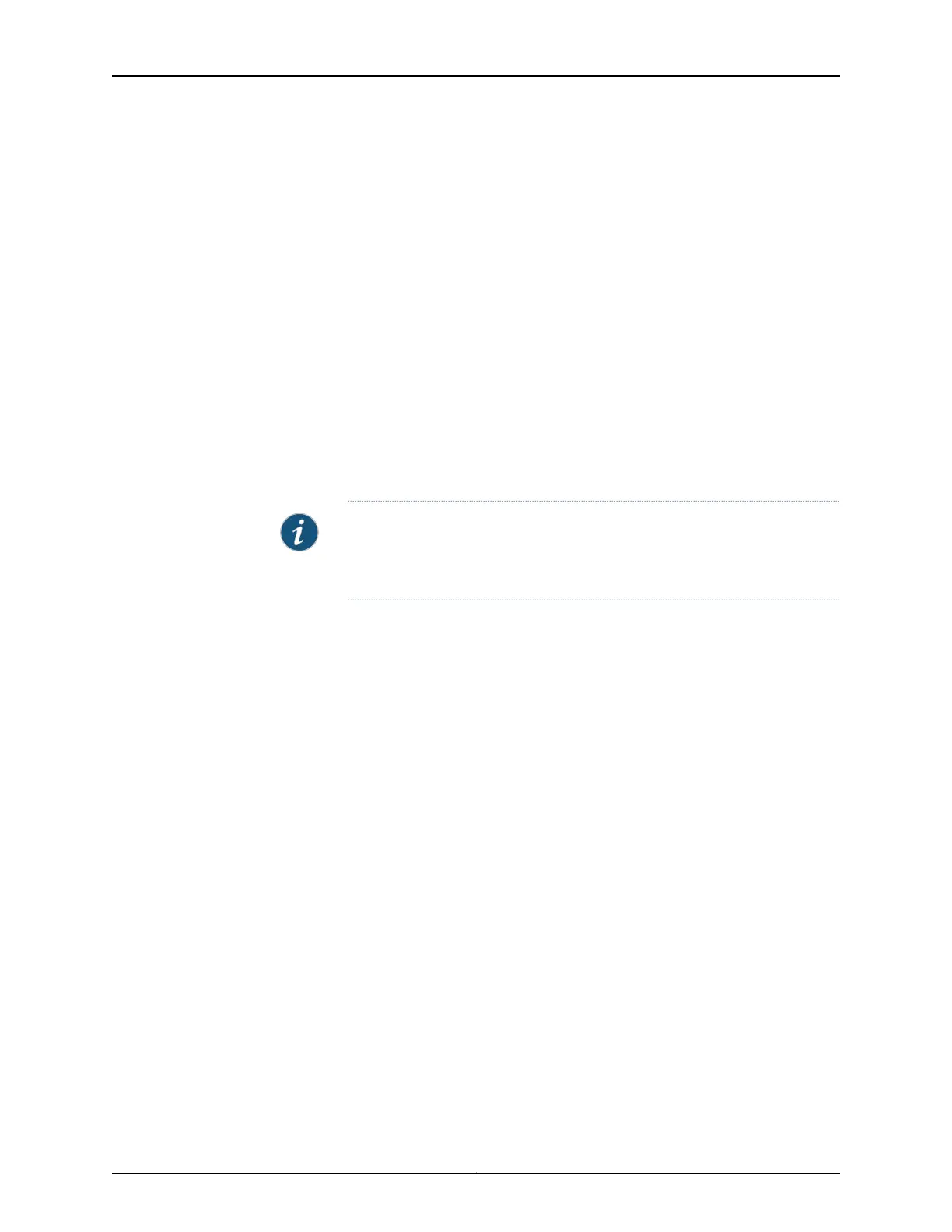To determine whether a problem is internal or external, you can loop packets on both
the local and the remote router. To do this, include the no-keepalives and encapsulation
cisco-hdlc statements at the [edit interfaces interface-name] hierarchy level and the
loopback local statement at the [editinterfacesinterface-name t1-options] hierarchy level,
as shown in the following example:
[edit interfaces]
t1-1/0/0 {
no-keepalives;
encapsulation cisco-hdlc;
t1-options {
loopback local;
}
unit 0 {
family inet {
address 10.100.100.1/24;
}
}
}
NOTE: To configure the CT1 loopback capability on the 16-port Channelized
E1/T1 Circuit Emulation MIC (MIC-3D-16CHE1-T1-CE), use the loopback
statement at the [edit interfaces ct1-fpc/pic/port] hierarchy level.
With this configuration, the link stays up, so you can loop ping packets to a remote router.
The loopback local statement causes the interface to loop within the PIC just before the
data reaches the transceiver.
To turn off the loopback capability, remove the loopback statement from the configuration:
[edit]
user@host# delete interfaces t1-fpc/pic/port t1-options loopback
You can determine whether there is an internal problem or an external problem by
checking the error counters in the output of the show interface interface-name extensive
command, for example:
user@host> show interfaces t1-fpc/pic/port extensive
Related
Documentation
• Configuring E1 Loopback Capability on page 167
• Performing a Loopback Test on an Interface
171Copyright © 2017, Juniper Networks, Inc.
Chapter 5: Configuring E1 and T1 Interfaces

